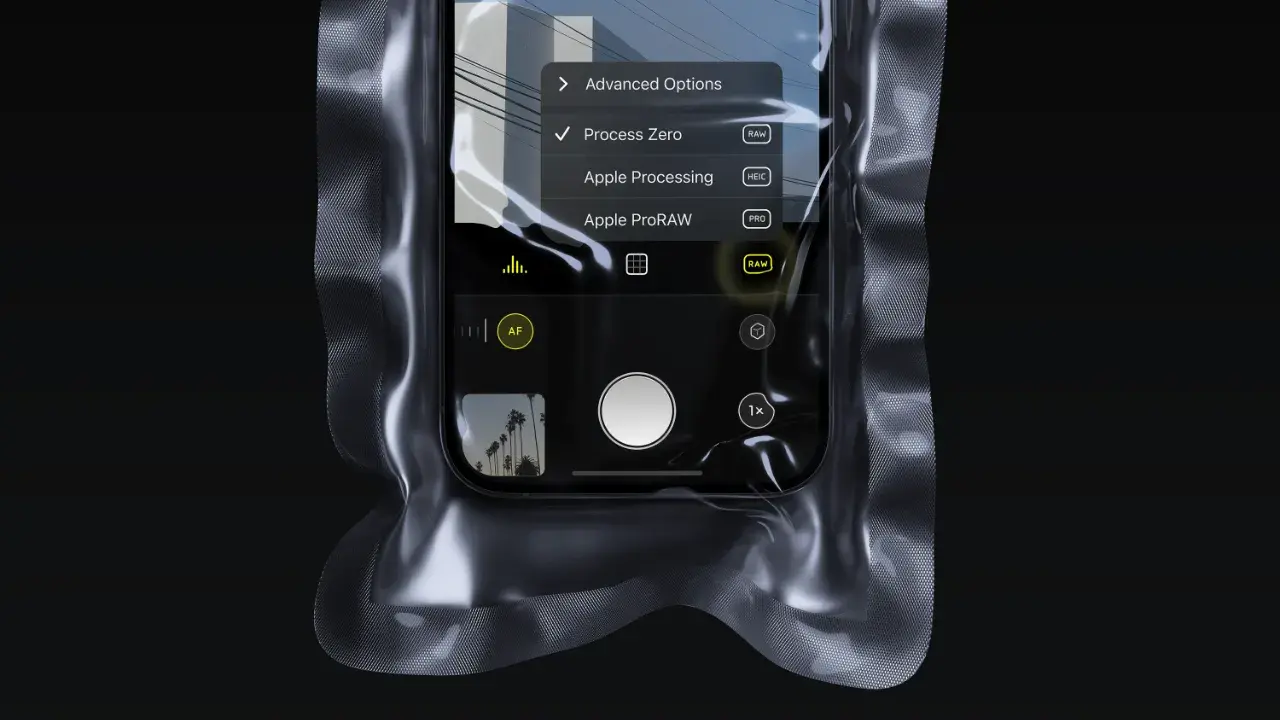
Developer Lux Optic’s latest feature, Process Zero, bucks pretty much every 2024 trend by using zero AI and zero computational photography. The result is natural, film-like photos and an iPhone that performs like a classic camera.
Process Zero is a new mode in Halide that lets users bypass the standard iPhone image processing system. It produces photos with more detail and allows the photographer greater control over lighting and exposure. This is not a photo filter, Lux is keen to point out, it really develops photos at the raw, sensor-data level.
“As cameras make more and more creative choices on your behalf, we think the photographer should retain the agency to cast aside algorithms and do their own thing,” writes Lux’s Ben Sandofsky. “Just as a photographer expresses themselves in their choice of lens, exposure settings, and film stock, Halide now lets you choose the process that works for you.”
The reasoning is pretty compelling. And the company illustrates it with the following three shots.


...this is underexposed...

In classic photography you get one or other of the first two; the iPhone will combine both to get the third. Which is great, but it does it automagically under the hood and it would be nice to give photographers back some control. And in recent years with a whole host of new tools such as Smart HDR and Deep Fusion, the tools have only become more sophisticated.
“For example, algorithm-based exposure logic can’t let you pick a specific shutter speed, because the whole job of the algorithm is to take nine photos at different shutter speeds and pick the best of the bunch,” Sandofsky says.
“To be clear, these algorithms are amazing, but leaving all decisions to a machine means sacrificing some choices as an artist. A machine can only make objective decisions, but many technical decisions are inherently subjective.”

Left: a standard iPhone photo. Right: Process Zero
Process Zero lets you turn it all off and retain full control over your camera settings. Inevitably there are tradeoffs involved in that. You will get noisy pictures in low light (though not perhaps as much as you might expect), you will need to make some exposure choices (see the window example from earlier), and you can say goodbye to 48 MP and work with 12 megapixels instead.
Modes can be switched on and off with ease if you want the full range of 2024’s image processing algorithms back in playing, and there is still image manipulation to be had after the event. It’s just old school.
“Just like film, Process Zero photos come with (digital) negatives, affording incredible control to change exposure after the fact,” says Sandofsky. “Much like film, it has grain. It works best in daytime or mixed lighting, rather than nighttime shots. Thankfully, unlike film, you don't need any chemicals to develop these negatives. We give you one dial.”
This is Image Lab. It does not contain any color or contrast adjustment knobs. You can't even crop. You’ll need to be importing your images into another app for all that.
And in another 2024 trend bucking positive, Process Zero is available on every iPhone that runs Halide and iOS 17, not just the latest iPhones Pro.

Left: Captured with automatic settings and ProRAW. Right: Native RAW with Manual Settings.
There is more to come too. Process Zero is part of Halide 2.15, and the developer sees it as the first step on the road to Halide III. There are various purchase options, ranging from a one-off $60 payment to a $19.99 yearly subscription (down to $11.99 for this week only), and Lux is going to drip feed those new features into the existing app rather than wait for a big bang release.
"We think getting these features into your hands and gathering feedback will make Mark III much better than developing it in a vacuum,” Sandofsky says.
tl;dr
- Halide's new Process Zero mode allows users to bypass standard iPhone image processing, resulting in more detailed photos and greater control over lighting and exposure.
- The mode gives photographers the freedom to make their own creative choices, similar to selecting lenses and exposure settings in traditional photography.
- While Process Zero offers increased control, it comes with trade-offs such as potential noise in low-light photos and a reduction in megapixels
- The feature is available on all iPhones running Halide and iOS 17, and is part of the Halide 2.15 update, with more features planned for future updates.
Tags: mobile filmmaking


Comments